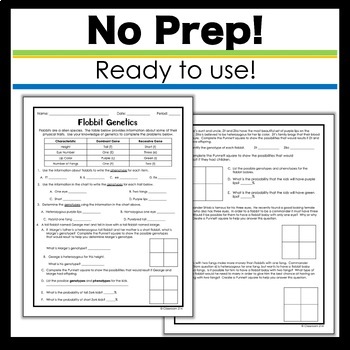Classroom 214
1.1k Followers
Grade Levels
6th - 10th, Homeschool
Subjects
Resource Type
Standards
NGSSMS-LS3-2
Formats Included
- PDF
Pages
12 pages
Classroom 214
1.1k Followers
Description
Practice Punnett squares with this fun set of critical thinking genetics word problems. Perfect for your middle school heredity and genetics unit. These are ready to use worksheets with an answer key.
WHAT'S INCLUDED:
- Two page worksheet
- Quick Check worksheet (half page)
- Answer key
NECESSARY BACKGROUND KNOWLEDGE
- Dominate and recessive traits
- How to set up and interpret a Punnett square
- Vocabulary - genotype, phenotype, homozygous, heterozygous, hybrid, purebred
This is designed to be used in a middle school science classroom, but could be used in a high school biology class. This assignment usually takes middle school students one 45 minute period to complete allowing time to go over the answers in class.
Created by Classroom 214
Follow my store to hear about new resources and sales. New products are 50% off for the first 24 hours.
Total Pages
12 pages
Answer Key
Included
Teaching Duration
50 minutes
Report this resource to TPT
Reported resources will be reviewed by our team. Report this resource to let us know if this resource violates TPT’s content guidelines.
Standards
to see state-specific standards (only available in the US).
NGSSMS-LS3-2
Develop and use a model to describe why asexual reproduction results in offspring with identical genetic information and sexual reproduction results in offspring with genetic variation. Emphasis is on using models such as Punnett squares, diagrams, and simulations to describe the cause and effect relationship of gene transmission from parent(s) to offspring and resulting genetic variation.





